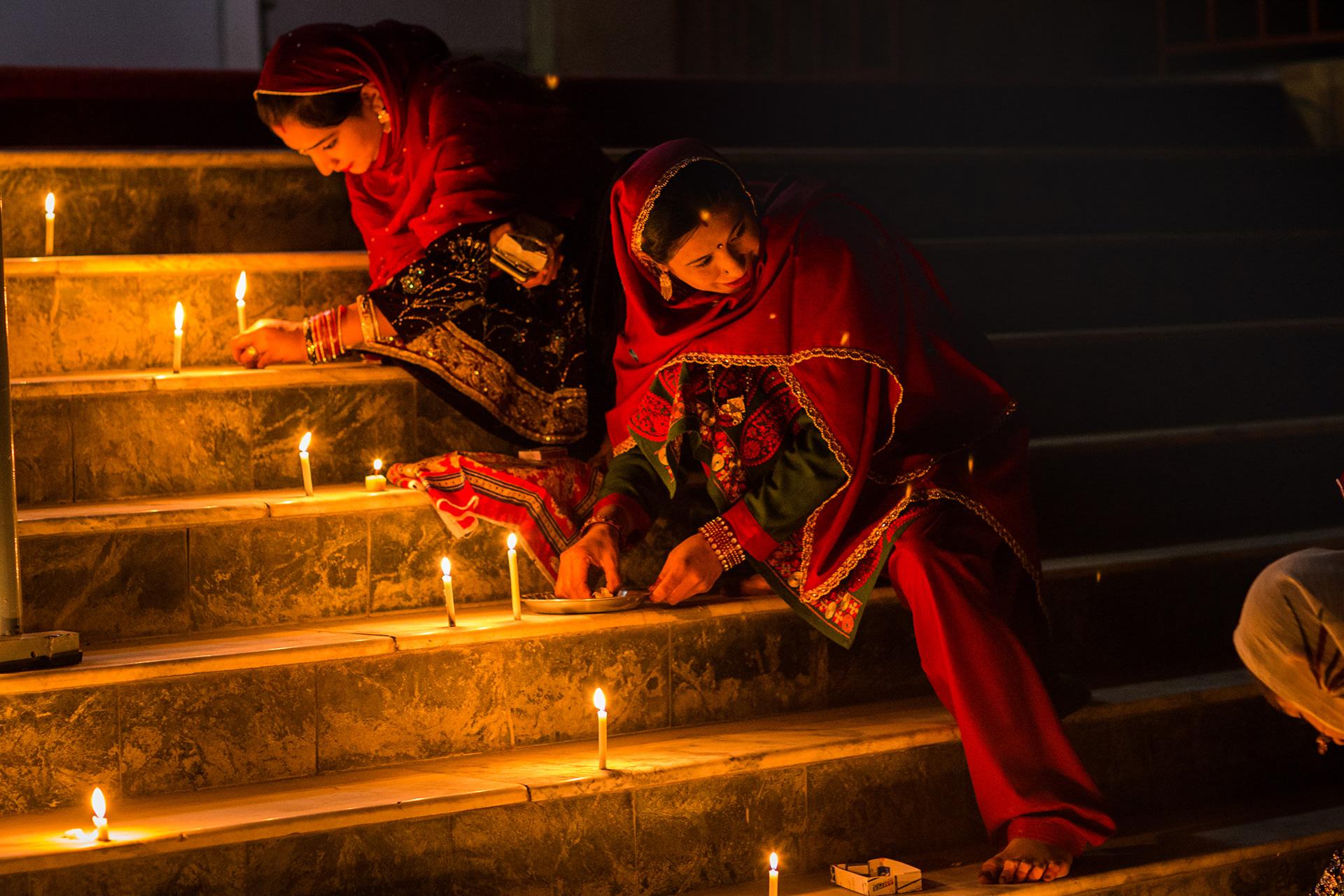Hidden in plain sight, on a poorly lit busy road, the exteriors of the Asmayee temple are deceiving – a plain, old building that could easily be confused for any other building in Kabul.
In contrast, the mosque next door stands out with its beautiful, intricate architecture. The call for evening prayers from the mosque intertwines with the sounds of the Hindu chants resonating from within the halls of the temple.
Several finely dressed, middle-aged women, move in and out of the many rooms of the vast temple complex, offering prayers and lighting candles. There are seven rooms built in a circle that serve as the temple for the various Hindu goddesses and gods, and one expansive hall, colourfully decorated and covered in Persian carpets, that serves as the community prayer room.
The women celebrate separately from the men. There is also a separate dining hall and community kitchen for the men and women who come to the temple.
Ramnath, 25, explains that “this is because the culture among Afghan Hindus is predominantly Pashtun”.
Over the years, Hinduism in Afghanistansurvived and thrived in Pashtun-dominant provinces, resulting in a confluence of cultures that combines practices and rituals of the region
Read full story on Al Jazeera
